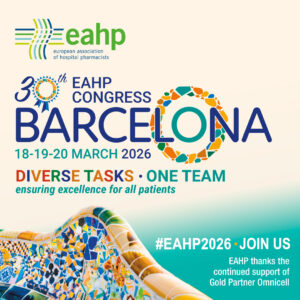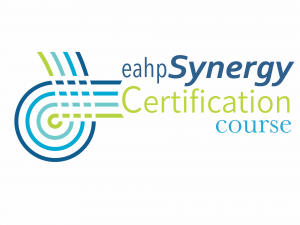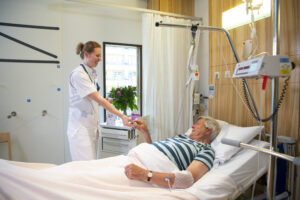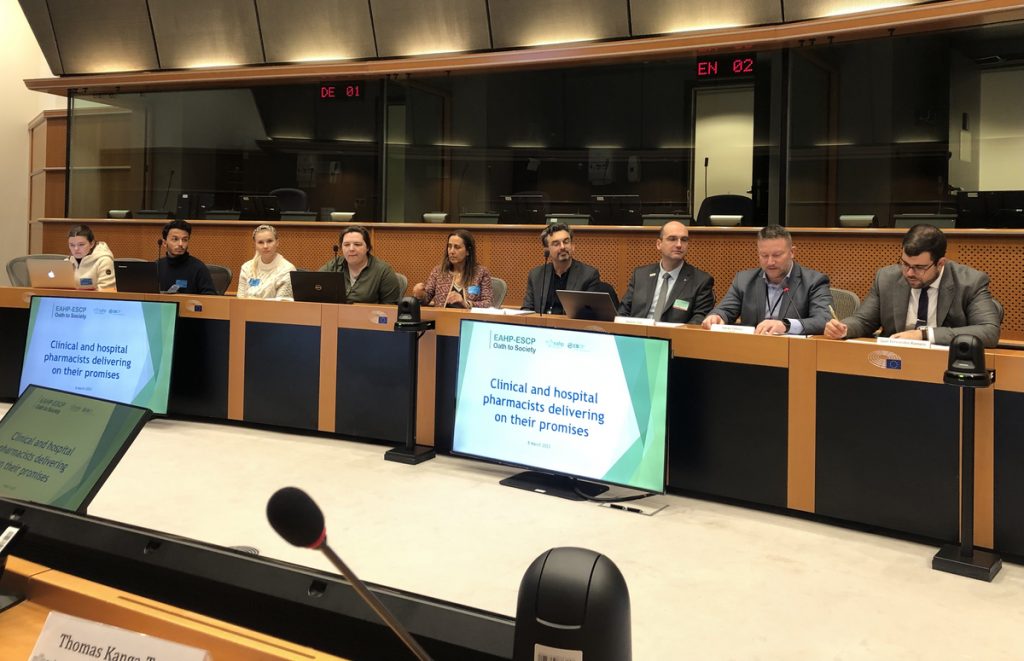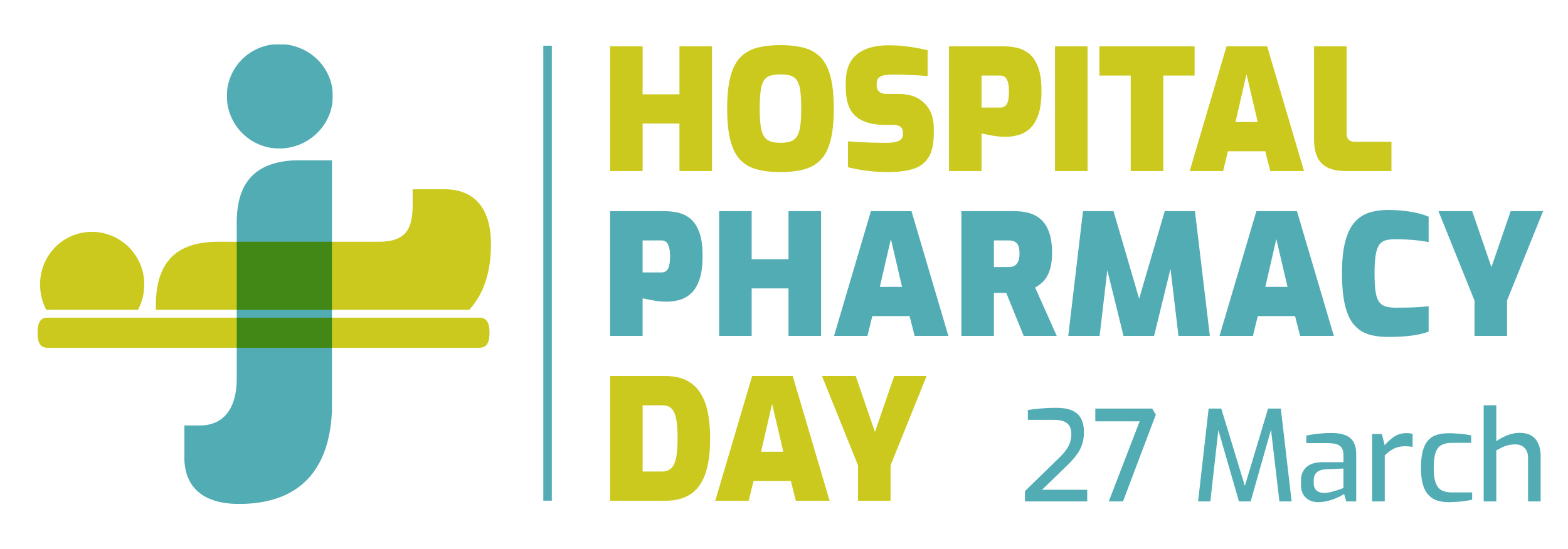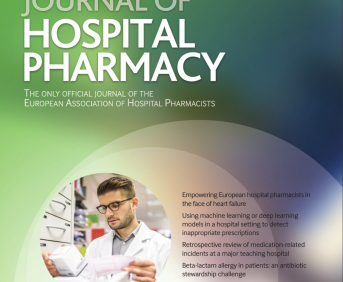Implementation of medication sessions in a post-stroke therapeutic education programme
Pdf

European Statement
Clinical Pharmacy Services
Author(s)
Florian Poncelet, Cedric Mwamba, Valentine Foulon , Anne-sophie Da Silva Rego, Catherine Floret
Why was it done?
Medication adherence of post-stroke treatments is important in preventing stroke recurrence. Problems of adherence with these medications are frequently encountered. Patient education is therefore essential in the management of this pathology.
What was done?
The creation of tools for the medication session of the post-stroke therapeutic education programme and the measure of the activity impact on patients’ knowledge of their treatments.
How was it done?
The session is led by a pharmacist in the form of a Game of the Goose, with the cards divided into 3 different colours, each corresponding to one of the 3 categories seen during the activity: General Questions, Statins and Anticoagulants/Anti-aggregants. This form allows participants to learn in a fun way and to promote interactions.
To evaluate the impact of these sessions, the same quiz is filled out by the patients at the beginning and end of the session, in order to measure the improvement of their knowledge. This quiz is in the form of an evaluation grid, composed of 20 questions with binary answers (True/False) covering the concepts discussed during the activity. The answers allow the attribution of a grade out of 20.
What has been achieved?
33 game cards were created (12 cards for general questions, 8 for statins and 13 for anticoagulants/anti-aggregants, of which three concern anti-vitamin K).
The patients take turns drawing a card and think collectively. The correct answer is later explained by the pharmacist. At the end of the activity, forms summarising the points discussed are given to the patients.
Concerning the quiz, the evaluation of the impact of these sessions was carried out on a first group of seven patients. The average score was 14 (12-17) at the beginning of the activity and 17 at the end (15-20), thus an average improvement in knowledge of 21% (0-58%).
What next?
An analysis of the questions with the lowest rate of positive responses will help us to improve the messages during the activity. A treatment plan given to patients at the end of the session to help them take their medication is also being discussed.
Implementation of a multidisciplinary personalised medicine unit for pharmacogenetic testing
Pdf

European Statement
Clinical Pharmacy Services
Author(s)
Jorge Fernández-Fradejas, Matías Morín-Rodríguez, Eva Delgado-Silveira, Miguel Ángel Moreno-Pelayo, Ana María Álvarez-Díaz
Why was it done?
There is an increasing number of gene-drug interactions that have the potential to predict patient response. Although the study of some genetic variants can be a useful tool to achieve a safer and more effective pharmacotherapy, the integration of personalised medicine in clinical practice has been challenging over the years, mainly due to prescriber’s scepticism and lack of clinical guidelines and protocols.
What was done?
We have implemented a multidisciplinary Personalised Medicine Unit (PMU) at a third- level hospital to facilitate preemptive pharmacogenetic testing.
How was it done?
The PMU provides its service with the involvement of Pharmacy and Genetics Department according to the following workflow:
1. Physicians order the pharmacogenetic test in the first contact with a patient expected to be treated with a drug with an available pharmacogenetic test.
2. A peripheral blood sample is drawn for DNA extraction and analysed by the Genetics Department.
3. An integrated pharmacogenetics report is generated and uploaded to the patient’s electronic medical record. This report contains the molecular information and its interpretation (responsibility of Genetics Department) and the clinical pharmacotherapeutic recommendation according to the results obtained (responsibility of Pharmacy Department). Dose adjustment recommendations follow the Clinical Pharmacogenetics Implementation Consortium (CPIC) guidelines and Dutch Pharmacogenomics Working Group (DPWG) guidelines.
4. Pharmacy Department follows up pharmacotherapeutic recommendation acceptance and clinical outcomes.
What has been achieved?
Since July 2021 we have implemented pharmacogenetic testing for seven drug-gene interactions:
July 2021. CYP2C9 – Siponimod.
November 2021. DPYD – Fluoropyrimidines (capecitabine, fluorouracil, tegafur).
April 2022. UGT1A1 – Irinotecan, liposomal pegylated irinotecan, sacituzumab govitecan.
Three hundred and seventy patients have benefited from pharmacogenetics testing. These tests have been requested by three different clinical departments and had a mean turnaround time of less than 10 days, preventing any potential treatment delays. An integrated Pharmacy-Genetics report with individualised pharmacotherapeutic recommendations was generated for every patient. These recommendations had an acceptance rate of 100%.
What next?
Since the creation of the PMU, we have been able to implement pharmacogenetic testing in clinical practice with a high level of acceptance. Our next challenges are introducing next- generation sequencing for the study of new gene-drug interactions in the unit portfolio and achieve a deeper integration of pharmacogenetic information in clinical decision support systems.
Rethinking the drug concept – the future medication logistics
Pdf

European Statement
Clinical Pharmacy Services
Author(s)
Cathrine Noergaard Peulicke, Michelle Lyndgaard Nielsen
Why was it done?
The process of building a new hospital has led to development and rethinking the drug concept. At the hospital we always have “the patient first” in mind. This is our codex. That is why we are changing the concept for delivery, dispensing and administration of medication. We wanted to ensure that the concept functioned from a patient safety perspective, patient flow perspective, patient involvement perspective, professional development perspective and perspective of a healthy operation. The vision is the right medication, from the right hand at the right time.
What was done?
At the new hospital, the medication logistics will undergo major changes. There will only be medication for acute use at the wards, the rest will be delivered ready-to-use from the main pharmacy or from a decentralised unit, called Pharmaservice. Here IV-solutions with short expiration are being reconstituted and oral solutions are dosed according to the prescription. Tablets and capsules are dispensed in the multi-dose robot at the main pharmacy. The multi-dose medication is equipped with a bar code which is scanned at administration and full electronic documentation is obtained. The majority of the medication will be dispensed daily for 24 hours and delivered in boxes for each patient to the wards.
In order to ease the transformation, we have built a mock up of a Pharmaservice unit where this set-up is enrolled to all inpatient wards in the hospital on the geriatric ward, children’s ward and gynaecology and obstetrics ward.
How was it done?
A steering group was founded and membered by managers from the involved wards including the hospital Pharmacy. Frequent meetings with the involved wards has been necessary to ensure competences and communication. Post-implementation we are closely evaluating the initiative.
What has been achieved?
Patient safety is in focus and with the multi-dose dispensing robot we have achieved full electronic documentation from the prescription, dispensing and administration process, and thereby have reached closed loop medication.
What next?
Having implemented the initiative on three wards, we are now working on enrolling this to the entire new hospital when it is ready in 2024. At the new hospital, we will have five Pharmaservice units servicing all inpatient wards.
Administration of intravenous medication into the drip chamber: a patient-friendly, time saving and sustainable method
Pdf

European Statement
Clinical Pharmacy Services
Author(s)
Rik Stuurman, Sofie Hessels, Chantal Kats, Chantal van Egmond, Kim Gombert-Handoko
Why was it done?
The administration of intravenous medication directly into the drip chamber has several benefits: 1) it saves time during preparation and administration for the nursing staff, 2) the patient has a shorter and controlled administration of the medication, often with less fluid and 3) the reduction of the use of infusion bags is sustainable and reduces costs.
What was done?
Administration of intravenous medication into the drip chamber using the integrated needle-free injection adapter is a good alternative to bolus injections and parenteral infusion. We conducted two pilot experiments at four wards, where we injected the 30 most frequently administered medications directly into the drip chamber instead of using an additional infusion bag via a sideline, which is the common practice in our hospital.
How was it done?
For the most frequently administered medications, we assessed whether it was possible to inject directly into the drip chamber. For these medications, we also defined the pump speed and the volume to rinse the system after each infusion. This information is explicitly described in our local parenteral handbook. In addition the nursing staff was fully trained and the procedures were updated.
What has been achieved?
During the evaluation of the first pilot after three months of the implementation, about 90% of the nurses indicated that they were satisfied with this alternative way of administration, that they did not experience any problems during the procedure and that they saved time compared to the old method. The second pilot will also evaluate the real-world reduction in infusion bags and costs (results are expected in December).
What next?
This alternative way of administration is now fully implemented and will be rolled out over the other wards with a “starter package”, which includes a guide for implementation, training material and frequently asked questions. In addition, the method will be fully integrated into the local parenteral handbook and the list of medications will be expanded.
Smartphone application for managing expiry dates in medicine rooms and reduction of medicine wastage
Pdf

European Statement
Clinical Pharmacy Services
Author(s)
Charlotte Arp Sørensen, Karin Aagot Møller Jørgensen, Anne Lund Sørensen, Rune Dalsenni Rask
Why was it done?
Clinical Pharmacy pharmaconomists perform a wide range of tasks at the hospital for example, medicine service with medication ordering, placement and checking of expiry dates. A sustainability project in 2020 highlighted manual and time consuming workflows, for example, manual reading, interpretation and notation of expiry dates in paper forms, when medicine rooms are reviewed for medicine that expires within the next half year. The dream of an easily accessible digital solution arose to make workflows more flexible, modern and sustainable.
What was done?
A smartphone application for managing expiry dates in medicine rooms and reduction of medicine wastage was applied.
With the application, the smartphone camera can be used to scan the data-matrix of medicine packages and get a sorted overview of medicine and its expiry dates. In the application you can register a medicine package as either used, discarded or released. By releasing medicine packages, the medicine is made available to colleagues in other medicine rooms at the hospital.
How was it done?
A smartphone application was developed in close and synergistic collaboration between software engineers, pharmaconomists and pharmacists. The smartphone application was initially tested in small scale, and then adjusted and implemented among pharmaconomists and pharmacists to be used in up to 129 medicine rooms at the hospital from January 2022.
What has been achieved?
The application creates value for the Hospital Pharmacy, the Hospital and the society because:
– It takes significantly less time to check and scan expiry dates
– We avoid misinterpretation of expiry dates; and
– By releasing medicines to be used in other medicine rooms, the application makes it easier for us to work sustainably. In nine months, 1700 packages with a total cost of
€121.000 has been moved between medicine rooms in an attempt to avoid medicine wastage.
At the hospital we have a mutual medicine budget. Therefore, it makes good sense to move medicine between medicine rooms to get the most health for the money.
What next?
Implementation of the smartphone application among pharmaconomists in other hospitals within the same region is considered. Also other hospital pharmacies in the country have shown their interest. In addition, a similar application for utensils is under development.
Implementation of a clinical pharmacokinetics unit in a third-level hospital
Pdf

European Statement
Clinical Pharmacy Services
Author(s)
María Calvo Arbeloa, Ana Isabel Idoate Grijalba, Mónica Uxue Beunza Sola, Daniel Fresán Restituto, Regina Juanbeltz Zurbano, Diana Tejada Marín , Andrea Rodriguez Esquiroz, Maite Sarobe Carricas
Why was it done?
Patients with special characteristics show a great variability in pharmacokinetic and pharmacodynamics (PK/PD) parameters, which may influence the efficacy and safety of antibiotic therapy.
What was done?
A Clinical Unit of Pharmacokinetics was implemented in the Service of Pharmacy (PS) for therapeutic drug monitoring (TDM) in patients.
How was it done?
1. Selection of drugs to be monitored: Antimicrobials (Vancomycin, amikacin, linezolid and voriconazole), Immunosuppressants (tacrolimus), Antineoplastics (methotrexate) and digoxin.
2. Installation of the Abbottbase Pharmacokinetic System (Pks®) software.
3. Creation in the Computerised Clinical History (CCH) a sheet for collecting anthropometric and pharmacological data and pharmacokinetic interpretation of the results obtained.
4. Creation in CCH of a consultation option for clinicians to request monitoring from the PS.
5. Formative session for clinicians and nurses.
What has been achieved?
To begin with the unit, we selected three drugs: vancomycin, amikacin and voriconazole. The hospital pharmacist or the clinician chose the susceptible patients.
Between December 2021 and September 2022, 171 determinations were made in 73 patients: 134 (78.36%) for vancomycin, 24 (14.06%) for amikacin and 13 (7.60%) for voriconazole. Forty-six (63.01%) patients were men and the mean age was 56.58 (17-97) years- old. Eighteen (24.66%) patients were obese. The mean creatinine level was 0.82 (0.4-2.69) mg/ml and glomerular filtration according to the Cockcroft and Gault formula was 81.16 (23.68-161.98) ml/min/m².
For vancomycin, 45 (88.24%) patients started the treatment with a standard dose of 1000 mg every 12 hours. In first determinations, 27 (52.94%) were under-therapeutic and 20 (42.55%) were overdosed. After modifying the dosage regimen, 35 (74.47%) were in range, 3 (6.38%) under-therapeutic and 13 (27.66%) supra-therapeutic.
In case of amikacin, 17 (85%) patients started with a standard dose (1000 mg every 24 hours) achieving target levels only in one case. All were under-therapeutic. After modifying the dosage regimen, we achieved the objective in all of them.
For voriconazole 3 patients were monitored. In 10 (43.5%) determinations, a change in dosage regimen was suggested due to subtherapeutic levels. All (100%) of the recommendations given by the PS were accepted.
What next?
The implementation of the unit in our hospital shows the usefulness and the need to extend pharmacokinetic monitoring to other medical services and drugs.
MEDICATION REGIMEN COMPLEXITY INDEX AMONG SOLID ORGAN TRANSPLANT PATIENTS
European Statement
Clinical Pharmacy Services
Author(s)
Andrea Costa-Navarro, Emilio Monte-Boquet, Mª Jesus Cuellar-Monreal, Ana Garcia-Robles, Eduardo Guerrero-Hurtado, Alejandra Ferrada-Gasco, Octavio Ballesta-Lopez, Andres Cruz-Sanchez, Jose Luis Poveda-Andres
Why was it done?
Complex medication regimens (MR) are associated with worse treatment adherence. The Medication Regimen Complexity Index (MRCI) is a validated tool used to quantify complexity of MR and it is the sum of the score in three sections: Dosage forms (A), dosing frequency (B) and additional directions (C).
What was done?
To assess the relative MR complexity among solid organ transplant patients (SOT; kidney, heart, lung and liver) in a tertiary hospital through the validated MRCI Spanish version.
How was it done?
Transplant patients who collected medication in the Hospital Pharmacy between January and March 2021 were selected. A total amount of 40 patients (ten per transplant) were chosen randomly through Excel®, and a macro with a template of MCRI was created. The qualitative variables were age, sex and type of transplant; the quantitative ones were months from transplant, total amount of medications, sections A, B, C and total MRCI. All prescribed medications documented in medical records at the hospital ambulatory clinics and the electronic medication list were included. Patients were excluded if they were followed-up in other hospitals, were exitus or MR dosage or frequency was missed/unclear. Subgroup analyses was made to assess MRCI among type of transplants through ANOVA. All data analysis were made with SPSS® version 23, with a <0,05 significance level and a confidence interval of 95%.
What has been achieved?
Sample median age was 56,6±14,7 years (95%CI:51,9-61,3), a 40%(16/40) were women, median of time from trasplant was 92,7±69,9 months (95%CI:70,4-115,0) and number of medications 11,1±4,6 (95%CI:9,6-12,6). Subgroup median MCRI were 23,3±10,2 (kidney; [95%CI:16,0-30,5]), 46,2±12,8 (lung; [95%CI:37,1-55,3]), 28,5±11,1 (heart; [95%CI:20,6-36,4]) and 18,7±5,4 (liver; [95%CI:14,8-22,5]). Section B was the most contributor to MCRI (16,6±8,2 [95%CI:14,0-19,2]), followed by C (6,6±4,3 [95%CI:5,2-7,9]) and A (5,7±3,7 [95%CI:4,5-6,9]). Tukey test showed a statistically significant MCRI in lung transplant with p<0,001 when compared to kidney and liver transplants, and p=0,002 compared to heart transplant.
What next?
Medication regiment of our sample was more complex in lung patients than in any other SOT, therefore these patients could benefit more pharmaceutical interventions. Further studies with bigger samples are required to confirm differences among kidney, liver and heart transplants.
Formation and empowerment for pharmaceutical interview focused on opioids in acute non-cancerous pain
European Statement
Clinical Pharmacy Services
Author(s)
Esteban CHAUMET, Johanna RAYMOND, Eric BARAT, Catherine CHENAILLER, Rémi VARIN
Why was it done?
A clinical study, including a PI focused on the management of acute non-cancerous pain with opioids, was implemented in post-emergency units of our teaching hospital. Formation and empowerment procedures for PIs are little or not described in the literature. Given the multiplicity of actors, which could perform those PIs, it appeared necessary to standardize our practices and key messages delivered to the patient.
What was done?
Create an adapted formation allowing standardization of practices between various actors performing a pharmaceutical interview (PI) focused on the management of acute non-cancerous pain with opioids.
How was it done?
Creation of different tools : a resource pack with opioids literature to train learners; a theoretical and practical formation schedule and an empowerment procedure, supervised by a qualified tutor; an interview frame with topics to be addressed during the PI; two audio simulations of patient interviews; complex questions that the patient might ask during the PI.
What has been achieved?
The resource pack contains 11 documents that provide the learner with relevant concepts and the key messages to deliver to patients. The formation schedule consists of several stages. Firstly, theoretical formation : learning with the resource pack; written restitution of knowledge on the interview frame and identification of the points to be improved with the tutor; completion of the e-learning on performing a PI (currently being created by the French Society of Clinical Pharmacy); listening to the two audio simulations and oral restitution of information to the tutor; restitution by the learner, during a reversed class, of knowledge on opioids and key messages for the patient; answering complex questions. The practical formation consists of observing the tutor during a PI, then performing PIs with a qualified tutor.
What next?
The formation and empowerment will be implemented in November 2021. As part of a quality approach, learner’s satisfaction and general appreciation will be collected in order to optimise the formation. The creation of this procedure will guarantee a uniform, complete and modern formation based on a quality system thus minimising the biases induced by the multiplicity of actors performing the PIs. In the future, this formation schedule and empowerment could be adapted to other PI topics.
Dose a clinical pharmacy service in emergency department improve the safety of eldery patient ?
European Statement
Clinical Pharmacy Services
Author(s)
Ugo CARRERE, Charles-Henri BLANCHER, Julien ARCIZET, Serge BENETEAUD, Caroline ALLIX-BEGUEC, Benoit LE FRANC
Why was it done?
EDs are the main entry point for hospitalizations. Medication errors are a major threat to patients safety. They are exacerbated by the high flow of patient admitted, the increase in polypharmacy in eldery patients, lack of knowledge of medication and time constraints.
What was done?
We have implemented proactive medication reconciliations (MR) for eldery patients in our emergency department (ED). Retroactive MR was performed in downstream departments (DD) for similar patients. Goals were to save physicians’ and nurses’ times, to improve patient safety.
How was it done?
A pharmacist provided MR in the ED unit three half-days per week. In agreement with the emergency physicians, we targeted patients aged 75 years and over and/or 65 years and over with multiple medications remained hospitalized. Pharmacists collected patients’ medication history and shared the information to ED prescribers. The drug assessment was recorded in a prescription support software. Prescribers, in the DD, could use it to prescribed without transcription and save time.
Our study was based on the comparison of the two groups : the proactive MR group in the ED and the control group with retroactive MR in downstream departements. Discrepancies were recorded and rated as intentional and unintentional in the two groups.
What has been achieved?
Between February and April 2021, 139 medication reconciliations were performed (proactive group n=61 ; retroactive group n=78). The age (about 83 years) and mean number of drugs per patient (about seven) of the two groups were not statistiquely different. We observed a statistically significant reduction in the number of unintentional discrepancies with proactive reconciliation in the ED (7% in the proactive group versus 20% in the retroactive group, p-value = 0.0034). Drugs for the nervous system and the cardiovascular system were the most affected by discrepancies. These discrepancies were mainly detected in prescriptions for patients taken care in the orthopedic surgery, the hepato-gastrology and the polyvalent medicine departments.
What next?
Clinical, economic and organizational scoring of unintentional discrepancies will be performed by a physician-pharmacist pair (CLEO scale of the French Society of Clinical Pharmacy)
Downstream departments with the most UD will be encouraged to use medication reconciliation.
A satisfaction survey will be conducted among the teams.
Implementation of a telepharmacy service in outpatient’s pharmaceutical consultation
European Statement
Clinical Pharmacy Services
Author(s)
QUERALT LOPEZ NOGUERA, ÀNGELA CASTELLÓ NÒRIA, CRISTINA DIEZ VALLEJO, LAURA VIÑAS SAGUÉ, MARTA COMA PUNSET, SILVIA CABARROCAS DURAN, MIREIA VILA CURRIUS, ANNA DORDÀ BENITO, EDUARDO TEJEDOR TEJADA, CRISTINA TORO BLANCH, ROSA NURIA ALEIXANDRE CERAROLS, ROSA SACREST GÜELL
Why was it done?
The declaration of the state of emergency by SARS-CoV-2 pandemic on March of 2020 had an impact on hospital PC.
During that period, it was advised by Healthcare Authorisations to minimize the risk of infection or spread of SARS-CoV-2 in order to protect vulnerable groups. For that reason, it was not recommended to assist in the hospital if it was not necessary. This fact caused some organizational changes in OPC to adapt to the current situation.
What was done?
Our hospital Pharmacy Department created a telepharmacy service in outpatient’s pharmaceutical consultation (OPC) after state of emergency declaration by SARS-CoV-2. We created a standard operating procedure working together with communitarian pharmacists and the Region Pharmacist’s College. The main aim was to ensure pharmaceutical care (PC) quality in vulnerable patients and the correct medication distribution and conservation. Pharmaceutical care was developed by telephone call and medication was send to communitarian pharmacy.
A comprehensive analysis was made to concern the impact on drugs delivery selecting certified distribution company which ensured drug traceability, custody and conservation.
How was it done?
In 2020, approximately 60 patients per day used to attend in OPC. According to the large number of patients, we defined which patients could take advantage of this programme. The selection criteria were adherent patients with pulmonary pathologies (cystic fibrosis, asthma, bronchiectasis, etc.), multiple sclerosis, amyotrophic lateral sclerosis, reduced mobility or patients over 65 years old who lived in more than 30km closed to the hospital or without any family member that could come.
In order to ensure the process traceability, an informatics tool has been created by Region Pharmacist’s College. Pharmacy Department, community pharmacy and the distribution company assumed all expenses.
What has been achieved?
369 of 2.346 patients were included in our telepharmacy service during the state of emergency. There was high level of acceptance by all patients. Only low-risk patients or patients who had an on-site doctor visit were attends in OPC. Nowadays, 196 patients still benefit from the initiative.
What next?
Telepharmacy program avoids patient’s displacements that are particularly susceptible to COVID-19 negatives effects. Moreover, it guarantees PC quality, patient’s adherence, process traceability and correct medication conservation from hospital to patient’s home.





